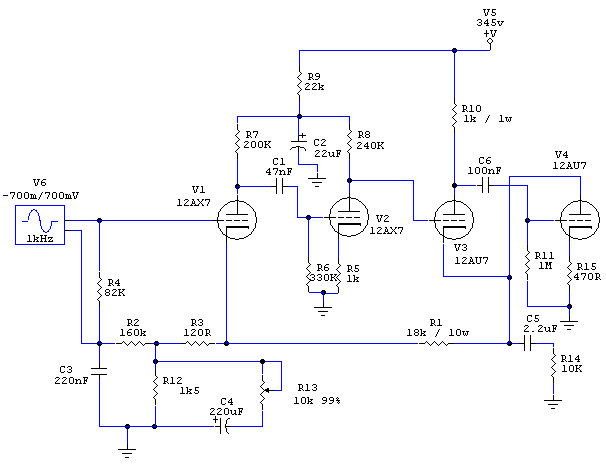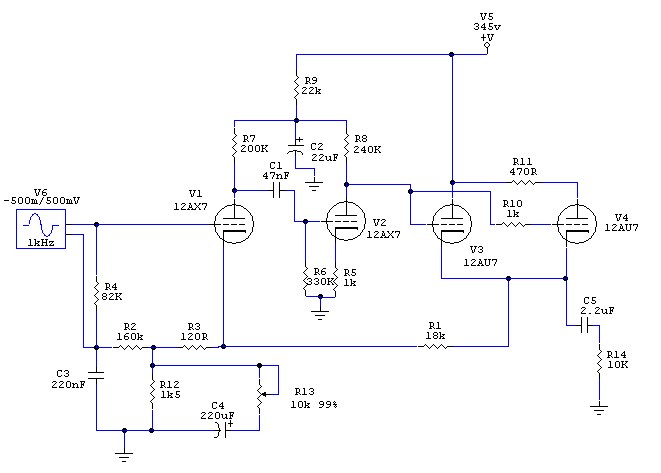> 12au7 white cathode follower
What are you driving?
If only 10K and up, 12AU7 is not the ultimate choice but very good.
If you are driving 600 ohms to Pro levels, the 12AU7 just won't do well. The plate impedance of a rich 12AU7 is about 10K-15K. Driving 600 ohms you can only get around 600/10,000= 0.06 of the supply voltage as load swing. Taking 345V supply, only half of that available on each side of the wave, we have 345V * 0.5 * 0.06 = 10V peak swing in 600 ohms, or barely +20dBm. And the gain will be well below unity, and distortion will not be as low as possible.
For 600 ohms, you want a bigger tube. Parallel 12AU7, or Dave's 12BH7. 6DJ8 looks good on paper but may have short life in this duty.
> the grid of the upper triode needs a DC bias
The value of this bias is quite critical for max symmetric swing and lowest even-order THD.
That may be part of why your result differs from Brodski's. And max symmetric swing is not the only criteria: try different load impedances, look at THD both near clipping and well below it, look for waveform balance between top and bottom (this is very load dependant). As long as the top grid is near half-way, cranking it up and trimming for max output isn't the wrong way to balance, but isn't best for all conditions or criteria.
(Brodski's analysis ignores the fact that Gm is very-variable in a power stage.)
> For best output drive capability, bias the follower as "rich" as possible without exceeding the plate dissipation rating of the tube.
For completeness: if you try that rule with very-very low supply voltages, you will run into grid current before the plate glows. That is not a problem for the usual suspects working at B+ of 250V and up, but if you work down around 100 volts (as for headphones or speakers) the zero-grid line is the limiting factor. (Unless you want to drive grid current, but that is usually wasteful when supply voltage is low, or when stage voltage gain is low.)










